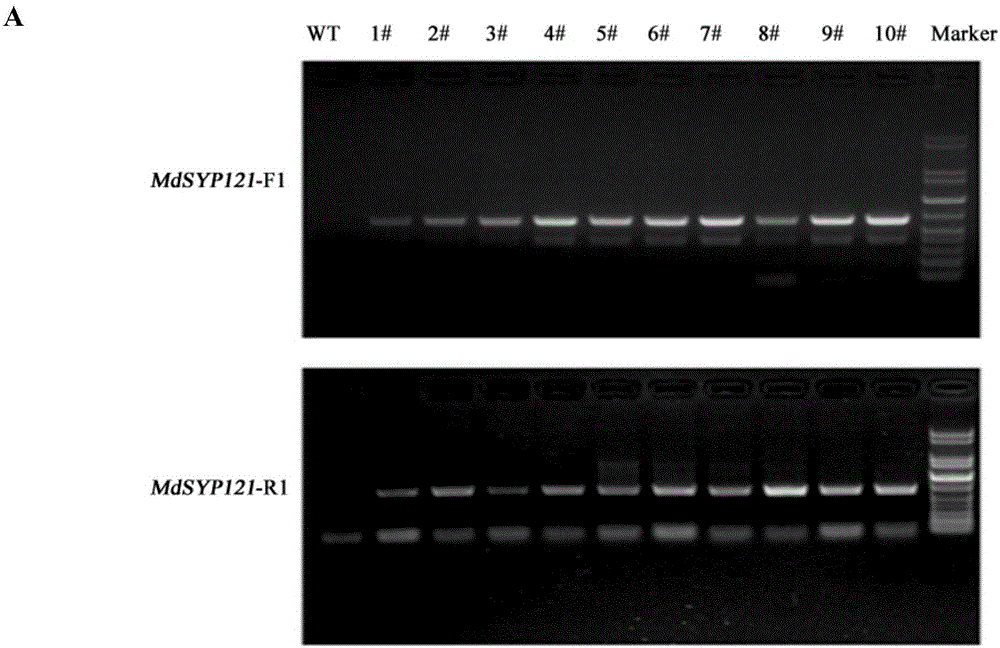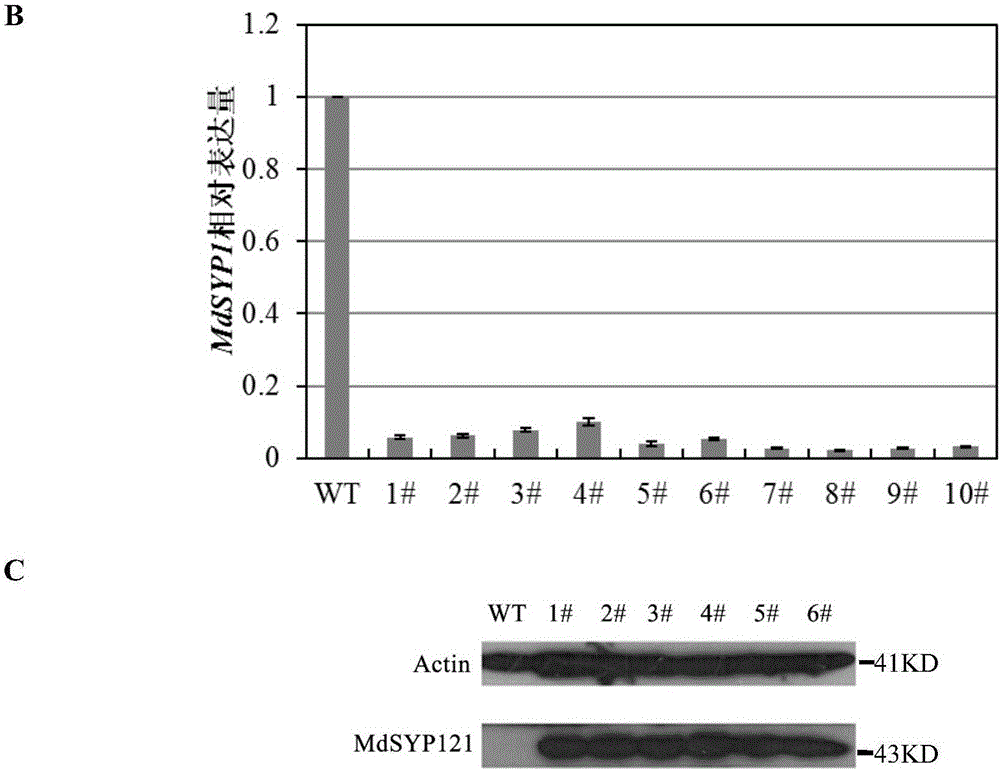Method for identifying anti-disease gene of apple by combining apple callus tissue cell culture and genetic transformation
A callus, disease resistance-related gene technology, applied in chemical instruments and methods, botanical equipment and methods, biochemical equipment and methods, etc., can solve difficult disease resistance genes, self-incompatibility, gene function Redundancy and other problems, to improve the screening efficiency, overcome the long conversion cycle, short time-consuming effect
- Summary
- Abstract
- Description
- Claims
- Application Information
AI Technical Summary
Problems solved by technology
Method used
Image
Examples
Embodiment 1
[0055] Example 1, apple callus cell culture and genetic transformation identification of apple disease resistance-related gene MdSYP121
[0056] 1. Obtaining the target gene MdSYP121 to be identified
[0057] 1. Extraction of total RNA from Fuji apple pulp by CTAB method
[0058] CTAB extraction buffer formulation: 0.1M Tris-Cl (pH 8.0), 1.4M NaCl, 20mM EDTA, 2% CTAB, 2% PVP, 2% β-mercaptoethanol
[0059] 1) Adjust the water bath to 65°C and pre-cool the centrifuge at 4°C.
[0060] 2) Prepare CTAB extract, take 4mL and add it to a 10mL centrifuge tube treated with DEPC, and preheat in a 65°C water bath.
[0061] 3) Grinding 0.5-1 g of apple pulp in liquid nitrogen until it becomes powdery.
[0062] 4) Quickly add the ground sample into the preheated centrifuge tube, shake vigorously, vortex, and place in a water bath at 65°C for 5 minutes.
[0063] 5) Cool to room temperature on an ice shelf, add an equal volume of chloroform / isoamyl alcohol (24:1) and vortex to mix, and cen...
Embodiment 2
[0150] Example 2, apple callus cell culture and genetic transformation identification of apple disease resistance related gene MdBAK1
[0151] 1. Acquisition of the target gene MdBAK1 to be identified
[0152] According to the apple genome data released by GDR, the primer design software DNASTAR was used to design the cloning primers of the BAK1 homologous gene in apple:
[0153] MdBAK1-1-NcoI-F:5'-CATGCCATGGACCCAACACTGATGAC-3',
[0154] MdBAK1-1-SmaI-R:5'-TCCCCCGGGTCTGGGACCGGACAACTC-3';
[0155] MdBAK1-2-NcoI-F:5'-CATGCCATGGCGTCCTCCGCCTCTGTT-3',
[0156] MdBAK1-2-SmaI-R:5'-TCCCCCGGGTCTGGGACCGGACAACTC-3'.
[0157] The RNA of the red callus of wild apple in Xinjiang was extracted, the cDNA obtained by reverse transcription was used as a template, and the above two pairs of primers were used for PCR amplification respectively, and the MdBAK1-1 CDS sequence was obtained, and the fragment length was 1851bp ( Figure 4 A, left) and MdBAK1-2CDS sequence, fragment length 1833bp (...
PUM
 Login to View More
Login to View More Abstract
Description
Claims
Application Information
 Login to View More
Login to View More - R&D
- Intellectual Property
- Life Sciences
- Materials
- Tech Scout
- Unparalleled Data Quality
- Higher Quality Content
- 60% Fewer Hallucinations
Browse by: Latest US Patents, China's latest patents, Technical Efficacy Thesaurus, Application Domain, Technology Topic, Popular Technical Reports.
© 2025 PatSnap. All rights reserved.Legal|Privacy policy|Modern Slavery Act Transparency Statement|Sitemap|About US| Contact US: help@patsnap.com



